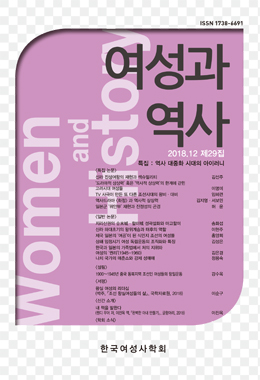2010년대 ‘평화의 소녀상’으로 대표되는 일본군 ‘위안부’ 표상은 2015년의 ‘한일 일본군 위안부 합의’와 ‘박유하 사태’를 경유하여 정치적 힘을 갖는 것으로 거듭났다. 과거 대중서사물이 일본군 ‘위안부’를 성인 여성의 성애화된 신체로 재현한 것과 달리, 최근 영화들은 소녀나 할머니로 등장하여 여성 연대를 강조하는 방식으로 서사화된다. 영화 <귀향>(2016), <눈길>(2017)은 여성들이 서로의 이름과 생명을 이어받는 것으로 형상화한다. <아이캔스피크>(2017)와 <허스토리>(2018)는 공론장에서 증언하는 투사로서의 일본군 ‘위안부’의 존재를 형상화하며, 일본군 ‘위안부’ 재현의 새로운 장을 열었다. 이러한 서사의 다양화 경향에서 중요한 것은 일본군 ‘위안부’ 재현이 갖는 ‘진정성’의 정치이다. 일본군 ‘위안부’를 다룬 영화는 ‘실화’에 근거했다는 수식어를 빼놓지 않는다. 김숨의 소설 『한 명』과 『흐르는 편지』 등은 증언집과 연구서 등을 각주로 달아서 이 이야기가 ‘진짜’임을 설득한다. 대중서사물은 실화와 증언이라는 근거를 바탕으로 이러한 폭력이 ‘진짜’ 있었던 일이며, 우리는 이를 기억할 책임이 있다는 것을 상기시킨다. 이 ‘진짜’와 ‘실화’의 수사에서 오히려 가려지는 것은 일본군 ‘위안부’ 운동과 그 재현을 둘러싼 고민들이다. 재현과 사실을 구분하는 것이 불가능하다는 것은 리얼리즘의 전제였다. 그러나 이 명제가 일본군 ‘위안부’ 서사에서는 다시 부활하는 것은 사실상 ‘위안부’ 표상에 대한 고민을 중지하는 문제와 연결된다. 일본군 ‘위안부’를 다루는 대중서사는 윤리적 책임과 할머니에 대한 연대에 기반하고 있다고 여겨지기에 ‘실화’이거나 ‘증언’이면 충분히 그 텍스트의 정치적 효과를 발휘한다고 여겨진다. 그래서 일본군 ‘위안부’를 둘러싼 한국문학/문화의 재현은 아직도 그 몸피가 너무나 작다.
Since 2011, the ‘Statue of Peace’ (Pyeonghwa ui sonyeosang) has represented the ‘comfort women’, victims of the Japanese military sexual slavery. It gained symbolic power especially after the trial of Park Yuha and the controversial agreement between South Korea and Japan over the issue in 2015. In the past, ‘comfort women’ in mass culture reproduced adult female eroticism of the body. But recent films have depicted the women as girls and grandmothers, emphasizing female solidarity and agency. The films < Return > (2016) and < Snows > highlight the friendship between the women as they become grandmothers who share their names and lives. < I can speak >(2017) and < Herstory >(2018) opened a new chapter in representations of ‘comfort women’ by depicting them as fighters, speaking up in court. Important in the various narratives is the politics of ‘authenticity’ in representations of ‘comfort women’. The narratives remind us that the violence was 'real' based on true stories and testimonies with responsibility on our part to remember them.
But the emphasis on ‘truth’ and ‘authenticity’ creates an aesthetic problem in the definition of realism and raises ethical questions about representation. Realism presumes that it is impossible to differentiate between representation and the real. That this problem reemerges in narratives about ‘comfort women’ is connected to the lack of reflection about representations of ‘comfort women’. It is thought that the political effect of ‘comfort women’ narratives based on true stories and testimonies are sufficient in fulfilling any ethical responsibility and solidarity toward the women. However, the representation of ‘comfort women’ in Korean literature and culture is still too thin.




